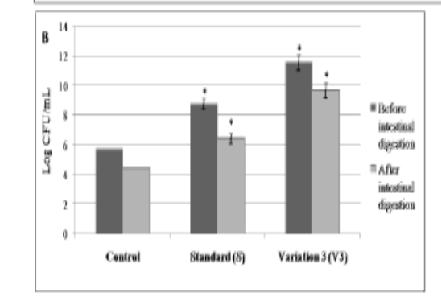


Indian Journal of Science and Technology
Year: 2024, Volume: 17, Issue: 5, Pages: 426-435
Original Article
Anindita Deb Pal1*, Poulami Chakraborty2, Radhika Jitesh Gandhi2
1Assistant professor, Department of Food Science & Nutrition Management, J.D. Birla Institute, 700020, Kolkata, India
2M.Sc Student, Department of Food Science & Nutrition Management, J.D. Birla Institute, 700020, Kolkata, India
*Corresponding Author
Email: [email protected]
Received Date:08 March 2023, Accepted Date:16 October 2023, Published Date:27 January 2024
Objectives: To demonstrate the nutritional and functional characteristics of the developed phytochemical containing prebiotic-enriched chocolates. Methods: Methods of Association of Official Analytical Chemists and standard biochemical procedures were employed for the determination of nutrient and phytochemical composition. Antioxidant and prebiotic activity were calculated through DPPH, the reducing potential assay, as well as the growth kinetics and plate count of Lactobacillus rhamnosus GG, respectively (p ≤ 0.01, 95% confidence interval). The functionality of the products was also analyzed in an in vitro simulated human intestinal digestion environment. Findings: Variation 3 (V3) chocolates prepared through the incorporation of cocoa powder (64%), cocoa butter (22.5%), stevia (3%), inulin (10%), and soy lecithin (0.5%), scored the highest sensory rating amongst all the prepared products. V3 revealed a desired proportion of proximate components (low fat and high fibre), minerals, vitamins, and phytochemicals such as polyphenol (25mg/g), alkaloids (189 mg/mL), and flavonoids (46mg/g), versus the standard chocolate (S), along with a low calorific value of the former (541.2Kcal). Furthermore, V3 could efficiently scavenge 2, 2-diphenyl-1-picryl-hydrazyl (86.04±0.4%), display reducing power (2.84±0.02), and accelerate the growth of probiotic Lactobacillus rhamnosus GG (OD 0.59, 11.61 Log CFU/mL at 20 hours), portraying antioxidant and prebiotic properties. Interestingly, V3 was found to sustain a significant proportion of antioxidant and prebiotic potential under imitated intestinal digestion, indicating their effectiveness in propagating benefits in the human body post-consumption. Novelty: Considerable retention of the antioxidant and prebiotic effects post intestinal digestion, besides the nutritional and phytochemical constitution of V3, may promote well-being consequent to its adaption alternative to conventional chocolates.
Keywords: Antioxidant, Chocolate, Nutrients, Phytochemicals, Prebiotic
© 2024 Pal et al. This is an open-access article distributed under the terms of the Creative Commons Attribution License, which permits unrestricted use, distribution, and reproduction in any medium, provided the original author and source are credited. Published By Indian Society for Education and Environment (iSee)
Subscribe now for latest articles and news.